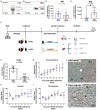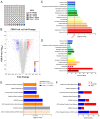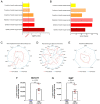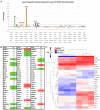Oxidative Stress, Glutathione Metabolism, and Liver Regeneration Pathways Are Activated in Hereditary Tyrosinemia Type 1 Mice upon Short-Term Nitisinone Discontinuation
- PMID: 33375092
- PMCID: PMC7822164
- DOI: 10.3390/genes12010003
Oxidative Stress, Glutathione Metabolism, and Liver Regeneration Pathways Are Activated in Hereditary Tyrosinemia Type 1 Mice upon Short-Term Nitisinone Discontinuation
Abstract
Hereditary tyrosinemia type 1 (HT1) is an inherited condition in which the body is unable to break down the amino acid tyrosine due to mutations in the fumarylacetoacetate hydrolase (FAH) gene, coding for the final enzyme of the tyrosine degradation pathway. As a consequence, HT1 patients accumulate toxic tyrosine derivatives causing severe liver damage. Since its introduction, the drug nitisinone (NTBC) has offered a life-saving treatment that inhibits the upstream enzyme 4-hydroxyphenylpyruvate dioxygenase (HPD), thereby preventing production of downstream toxic metabolites. However, HT1 patients under NTBC therapy remain unable to degrade tyrosine. To control the disease and side-effects of the drug, HT1 patients need to take NTBC as an adjunct to a lifelong tyrosine and phenylalanine restricted diet. As a consequence of this strict therapeutic regime, drug compliance issues can arise with significant influence on patient health. In this study, we investigated the molecular impact of short-term NTBC therapy discontinuation on liver tissue of Fah-deficient mice. We found that after seven days of NTBC withdrawal, molecular pathways related to oxidative stress, glutathione metabolism, and liver regeneration were mostly affected. More specifically, NRF2-mediated oxidative stress response and several toxicological gene classes related to reactive oxygen species metabolism were significantly modulated. We observed that the expression of several key glutathione metabolism related genes including Slc7a11 and Ggt1 was highly increased after short-term NTBC therapy deprivation. This stress response was associated with the transcriptional activation of several markers of liver progenitor cells including Atf3, Cyr61, Ddr1, Epcam, Elovl7, and Glis3, indicating a concreted activation of liver regeneration early after NTBC withdrawal.
Keywords: glutathione metabolism; hereditary liver disease; liver regeneration; nitisinone; oxidative stress; transcriptomics; tyrosinemia type 1.
Conflict of interest statement
The authors declare that they have no conflict of interest.
Figures






References
-
- Alvarez F., Atkinson S., Bouchard M., Brunel-Guitton C., Buhas D., Bussières J.F., Dubois J., Fenyves D., Goodyer P., Gosselin M., et al. The Québec NTBC study. Adv. Exp. Med. Biol. 2017;959:187–195. - PubMed
-
- Larochelle J. Discovery of hereditary tyrosinemia in Saguenay-Lac St-Jean. Adv. Exp. Med. Biol. 2017;959:3–8. - PubMed
Publication types
MeSH terms
Substances
LinkOut - more resources
Full Text Sources
Molecular Biology Databases
Research Materials
Miscellaneous

